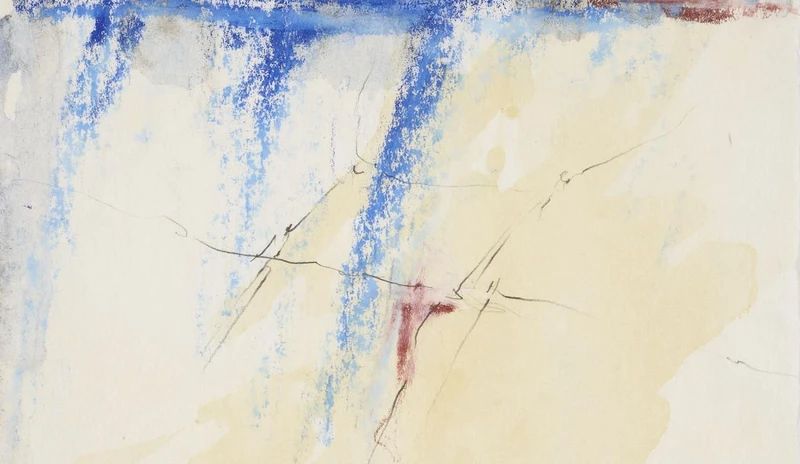Display | Gesture and line: four post-war German and Austrian artists
5 Oct 2023-1 Apr 2024


FREE display
Explore the work of four artists who spearheaded the practice of drawing in the post-war years.
From the 1960s drawing assumed a prominent position among a rising generation of post-war artists in Germany and Austria. This exhibition examines works on paper by four of these artists, who are still comparatively little known in the UK.
The work of the three German artists – Rudi Tröger (born 1929), Karl Bohrmann (1928–1998) and Carl-Heinz Wegert (1926–2007) – is characterised by a quiet introspection and they largely shunned the limelight of the art world. In the 1960s Tröger developed the thin, wispy line characteristic of his pen and ink drawings. Set in the studio, home or garden, the distorted space and elongated figures give his drawings their highly charged, introspective vision. Tröger once explained what he was after: 'Drawing something so that it becomes something else'. Bohrmann made many drawings, his preferred medium. In his final years, when he was living in Cologne, he produced piles of small drawings – female nudes, still lifes, interiors. Quietly introspective, they are informed by his dictum: 'A drawn line is a moment in time through which the artist has lived'. Wegert's sensitive drawings are characterised by a weblike delicacy, creating entire microcosms from just a few spare lines. A shy, retiring individual, he deliberately evaded the art world as far as possible.
The Austrian Hermann Nitsch (1938–2022), by contrast, attracted public controversy through his highly provocative performances, or 'Actions', involving nudity, blood and Christian symbolism. In the 1980s Nitsch was engaged in a highly experimental printmaking project which was closely linked to his taboo-breaking 'Actions'. Intended as a kind of catharsis, Nitsch involved many participants in these cult-like events, hoping to attain what he claimed was a 'more purified place of consciousness'. The prints are layered, combining bloodied red marks with drawings of figures stripped of their flesh.
This exhibition celebrates a major recent gift of 67 works on paper to the British Museum from the collection of Count Christian Duerckheim.